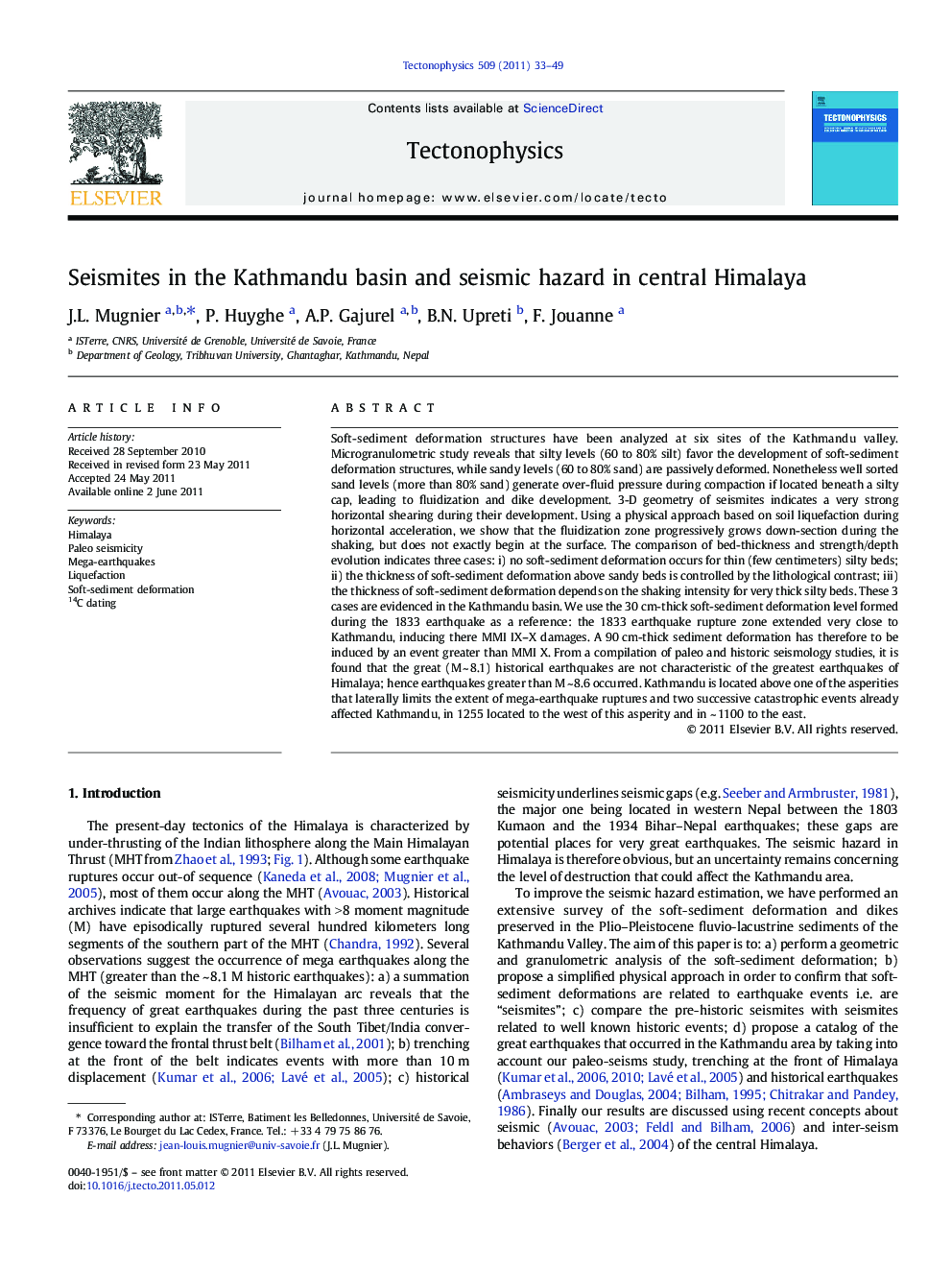| کد مقاله | کد نشریه | سال انتشار | مقاله انگلیسی | نسخه تمام متن |
|---|---|---|---|---|
| 4693162 | 1636840 | 2011 | 17 صفحه PDF | دانلود رایگان |

Soft-sediment deformation structures have been analyzed at six sites of the Kathmandu valley. Microgranulometric study reveals that silty levels (60 to 80% silt) favor the development of soft-sediment deformation structures, while sandy levels (60 to 80% sand) are passively deformed. Nonetheless well sorted sand levels (more than 80% sand) generate over-fluid pressure during compaction if located beneath a silty cap, leading to fluidization and dike development. 3-D geometry of seismites indicates a very strong horizontal shearing during their development. Using a physical approach based on soil liquefaction during horizontal acceleration, we show that the fluidization zone progressively grows down-section during the shaking, but does not exactly begin at the surface. The comparison of bed-thickness and strength/depth evolution indicates three cases: i) no soft-sediment deformation occurs for thin (few centimeters) silty beds; ii) the thickness of soft-sediment deformation above sandy beds is controlled by the lithological contrast; iii) the thickness of soft-sediment deformation depends on the shaking intensity for very thick silty beds. These 3 cases are evidenced in the Kathmandu basin. We use the 30 cm-thick soft-sediment deformation level formed during the 1833 earthquake as a reference: the 1833 earthquake rupture zone extended very close to Kathmandu, inducing there MMI IX–X damages. A 90 cm-thick sediment deformation has therefore to be induced by an event greater than MMI X. From a compilation of paleo and historic seismology studies, it is found that the great (M ~ 8.1) historical earthquakes are not characteristic of the greatest earthquakes of Himalaya; hence earthquakes greater than M ~ 8.6 occurred. Kathmandu is located above one of the asperities that laterally limits the extent of mega-earthquake ruptures and two successive catastrophic events already affected Kathmandu, in 1255 located to the west of this asperity and in ~ 1100 to the east.
► Soft-sediment deformation is controlled by the fluidization of silty levels.
► Shearing between planes parallel to the surface causes soft-sediment deformation.
► Pre-historic seismites are three times thicker than seismites linked to MMI X historic events.
► Kathmandu is at the transition between two segments of Himalaya.
► Two successive catastrophic earthquakes occurred during the 12th and 13th centuries.
Journal: Tectonophysics - Volume 509, Issues 1–2, 1 August 2011, Pages 33–49